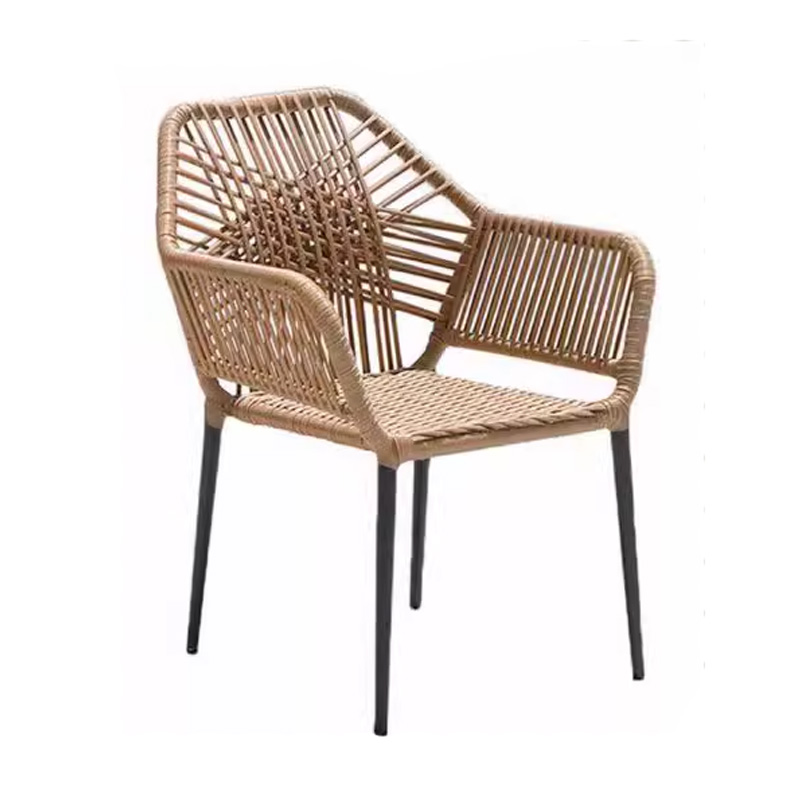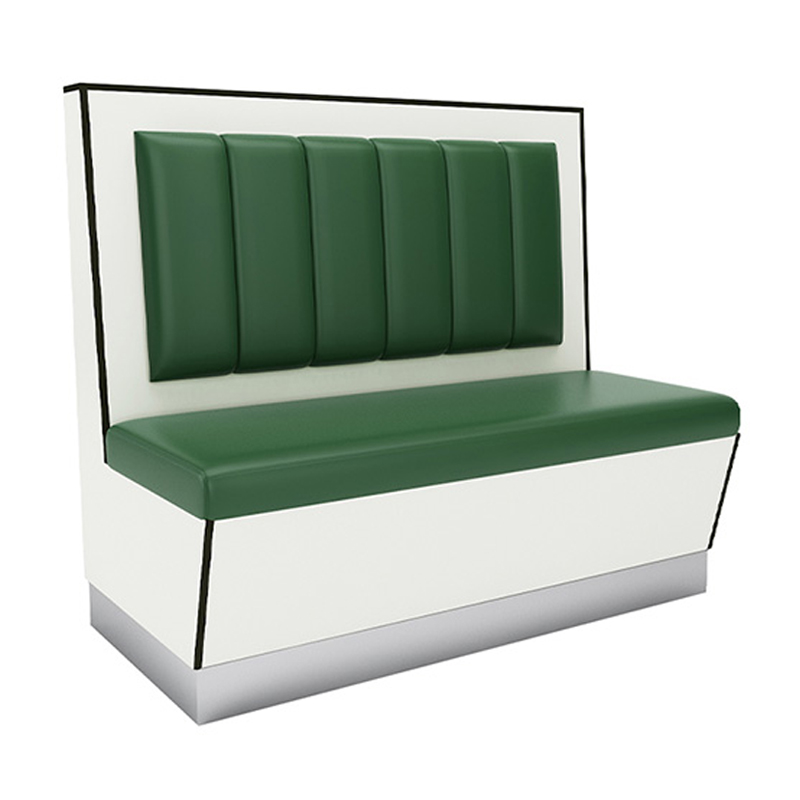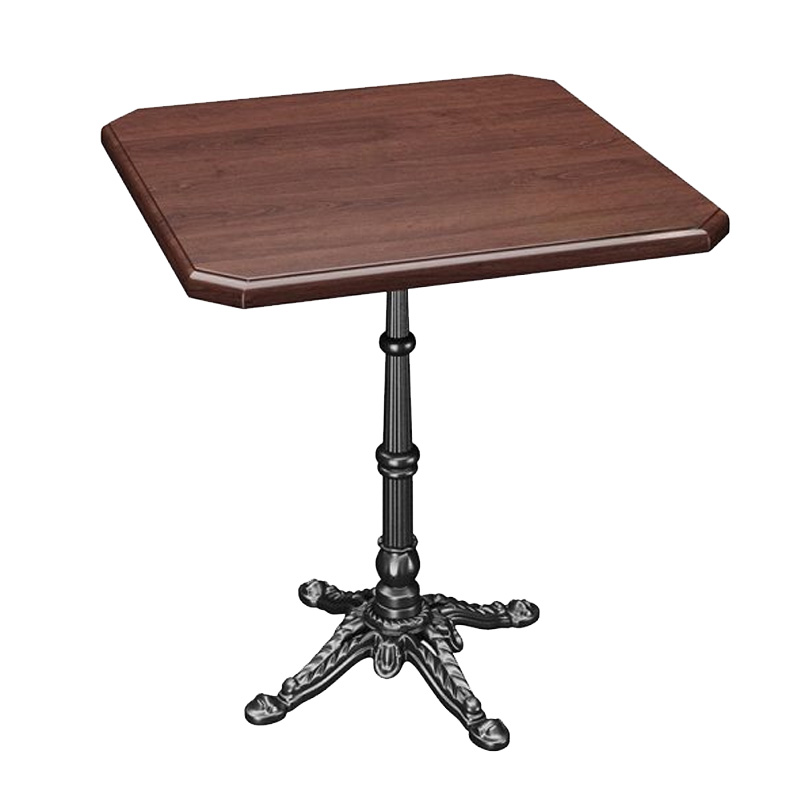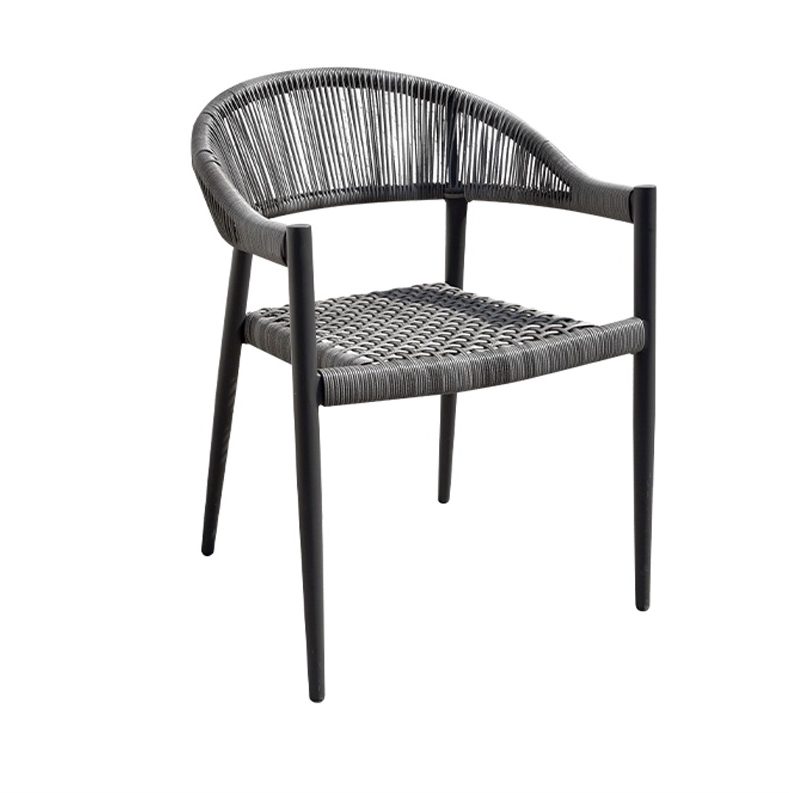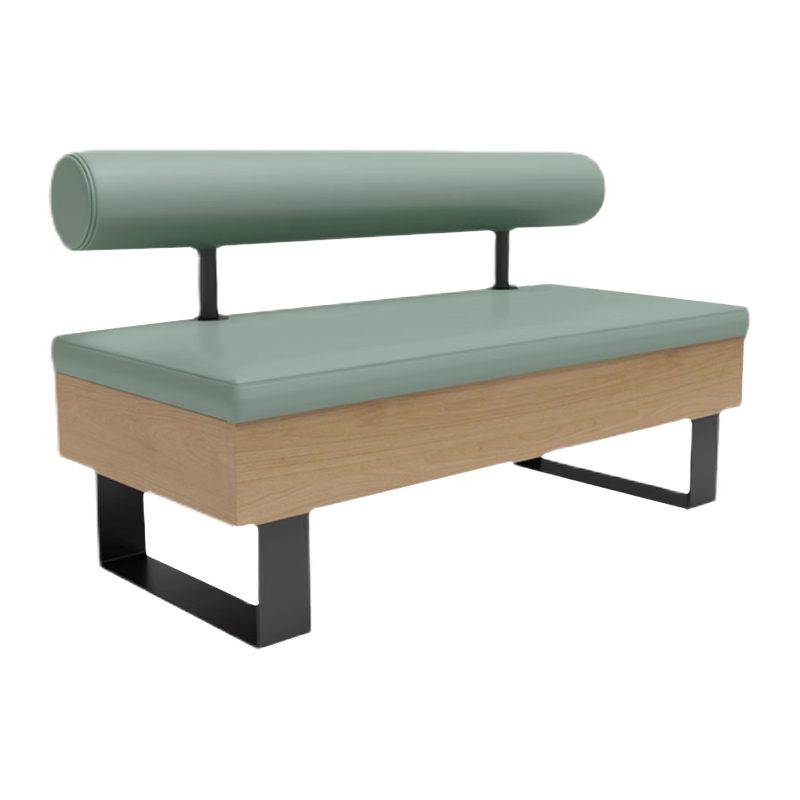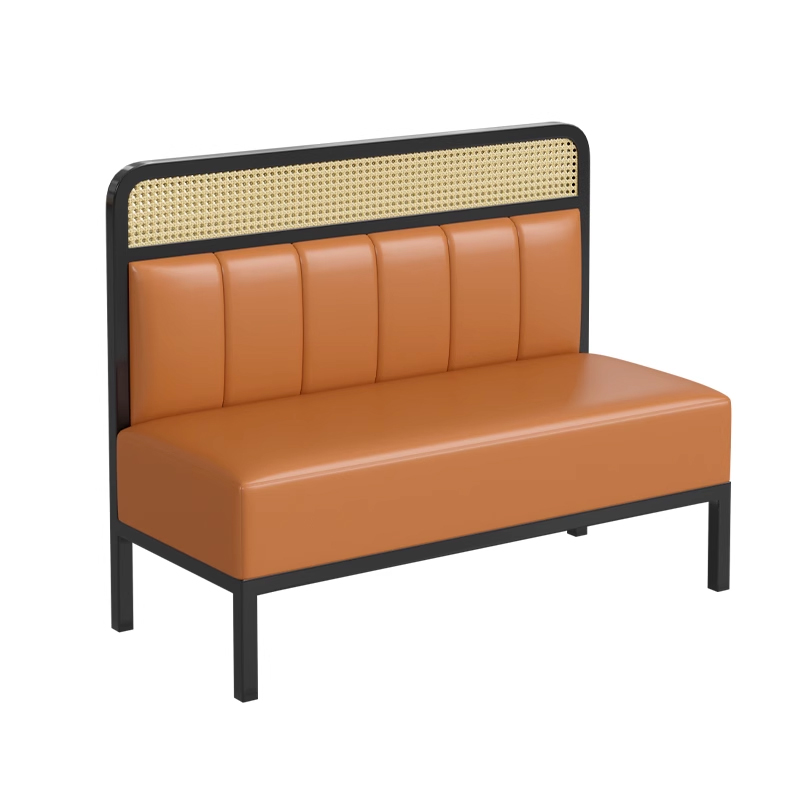When guests walk into your restaurant, they aren’t just seeing tables and chairs — they’re reading the story of your brand. Every curve, cushion, and seam in a custom restaurant booth tells them who you are before a menu even hits the table.
A booth can express intimacy, luxury, or efficiency. It can make a 10-square-meter café feel spacious, or a 200-seat dining hall feel personal. That’s why leading restaurateurs in 2025 no longer view booth design as “furniture selection,” but as a strategic experience investment.
A good booth is like good architecture: invisible when it works perfectly. It directs flow, enhances comfort, and silently strengthens your brand identity.
1. The Value of Purposeful Design
Designing restaurant booths isn’t simply matching fabric to color schemes — it’s about shaping customer behavior.
A well-designed booth can increase dwell time, improve acoustic privacy, and even reduce staff fatigue. Layouts that allow smooth circulation between booth rows help servers move efficiently and minimize interruptions for diners.
Think of design as choreography: when done right, it looks effortless.
“Booths are the quiet architecture of hospitality,” notes a Mingmeng Furniture design consultant. “They define comfort, pace, and the emotional temperature of the room.”
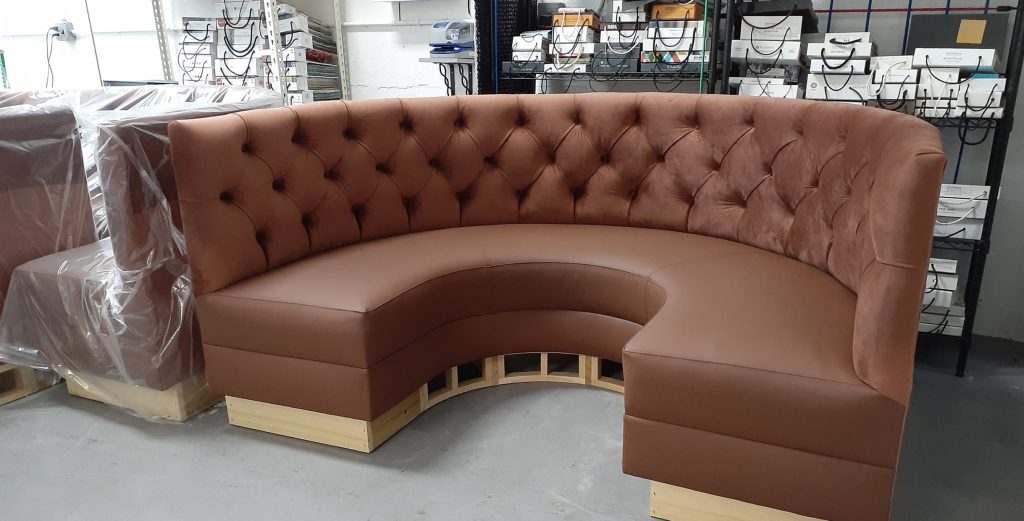
A thoughtful booth design can also translate into measurable ROI. According to UK design research, every £100 invested in interior design can increase turnover by £225 — proof that aesthetics and profit are no longer separate conversations.
2. Aligning Brand and Booth Design
A booth’s form should echo your restaurant’s identity. A minimalist bistro may choose straight-lined banquettes in muted fabrics, while a steakhouse might feature deep-buttoned leather booths that suggest permanence and luxury.
Consistency is the anchor of customer trust. If your restaurant promises warmth and connection but offers cold, rigid seating, the disconnect breaks immersion.
Ask yourself:
- Does the booth design mirror the atmosphere I’m selling?
- Do color, lighting, and materials tell one cohesive story?
- Would a first-time customer “feel” my brand just by sitting down?
A strong concept keeps every design decision purposeful — from stitching pattern to table base selection.
3. Materials that Marry Aesthetics and Endurance
Choosing the right material determines whether your booths last a season or a decade. In commercial spaces, it’s not only about beauty but resilience.
| Component | Recommended Materials | Why It Matters |
|---|---|---|
| Frame | Kiln-dried hardwood + steel bracing | Prevents warping and wobbling |
| Seat Foam | High-density polyurethane | Maintains shape after heavy use |
| Upholstery | Performance vinyl / faux leather | Easy to clean, moisture-resistant |
| Backrest Inserts | Plywood with acoustic padding | Reduces noise and echo |
| Accent Details | Brass trim / rattan panels / powder-coated legs | Adds tactile warmth |
Mingmeng’s 2025 booth line embraces hybrid design: solid wood bases paired with woven cane or metal detailing — a style trend known as warm minimalism, balancing craftsmanship with durability.

4. Ergonomics and Space Planning
The most successful dining layouts feel natural — no awkward corners or cramped aisles. Booths play a huge role in achieving that.
- Seat height: ~18 inches for standard dining comfort
- Back height: 36–48 inches depending on privacy needs
- Depth: 24–30 inches for balanced legroom
- Distance between rows: 54–60 inches minimum for smooth traffic flow
Ergonomics turn repeat visitors into regulars. A well-angled backrest encourages relaxation, while slightly curved corners make groups feel connected without crowding.
“Good design isn’t noticed — it’s felt,” says one of Mingmeng’s in-house engineers.
5. From Workshop to Dining Room
Behind every elegant booth is a series of precise, hands-on processes.
- Frame Construction: solid wood structure, reinforced with brackets.
- Foam Cutting: automated precision for consistent comfort.
- Upholstery Work: tailored stitching, seam alignment, quality control.
- Assembly & Inspection: each booth pre-assembled before shipment.
Every Mingmeng booth is test-assembled in-house to verify fit before shipping. This reduces installation time and eliminates alignment issues on site — a major time-saver for busy restaurant launches.
6. The Installation Stage: Precision on Site
Installation is where design meets reality. Professional setup teams ensure booths fit seamlessly into the floor plan — aligned, leveled, and anchored for long-term use.
Key steps include:
- Marking layout positions based on CAD drawings
- Anchoring modules securely to walls or floors
- Leveling seat bases to eliminate rocking
- Final polish and inspection before hand-off
The best installations finish quietly, just like the booths themselves — sturdy, symmetrical, and ready for service.
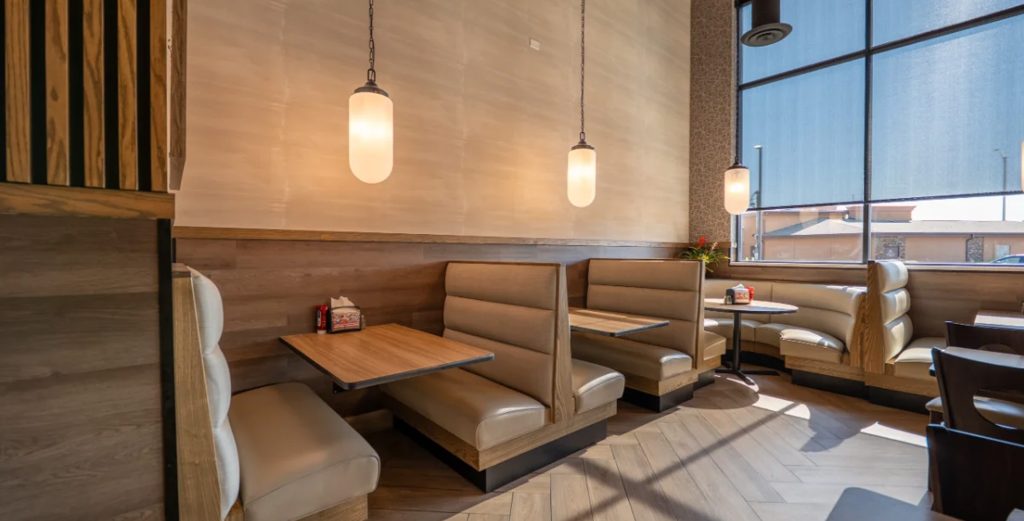
7. Maintaining Longevity: Care Tips for Operators
A booth’s lifespan depends on upkeep. Even the strongest build requires simple maintenance:
- Clean upholstery weekly with mild detergent
- Avoid abrasive sponges or alcohol cleaners
- Re-tighten base anchors annually
- Rotate usage in high-traffic zones to ensure even wear
For operators running multiple venues, Mingmeng offers long-term upholstery replacement programs — allowing brand consistency without full rebuilds.

8. The Human Side of Design: Comfort Equals Retention
A well-designed booth affects not just customers but staff, too. Comfortable layouts make service smoother, reduce collisions, and improve morale.
Restaurants with ergonomic booth layouts report up to 15% higher customer return rates — proof that comfort translates directly to loyalty.
As customer expectations evolve, it’s no longer about just “looking premium.” It’s about feeling considered. A booth that cradles the diner softly, offers privacy, and allows servers to move freely is a subtle, powerful message:
“We thought about you.”

FAQs: Common Questions About Custom Booths
Q1: What’s the typical lead time for a custom restaurant booth?
Around 4–6 weeks, depending on materials and quantity.
Q2: Can I design booths for irregular or curved walls?
Yes. Modular and radius booths can be custom-fitted to any wall shape.
Q3: What is the best upholstery for heavy traffic areas?
Performance vinyl or eco-leather — they resist stains and meet fire standards.
Q4: Are custom booths ADA-compliant?
They can be. Booth height and spacing can be adjusted to ensure accessibility.
Conclusion: From Concept to Comfort
A custom restaurant booth is not merely a seat — it’s part of your brand’s architecture. It guides emotions, traffic, and conversation.
From the first design sketch to final installation, each decision shapes how your guests perceive your restaurant. The goal isn’t just beauty; it’s cohesion, longevity, and a sense of belonging.
If you’re planning a renovation or opening a new space, Mingmeng’s design team can help you transform your vision into functional, high-impact booth seating that stands the test of time.
📞 Let’s Build Your Next Dining Experience


 English
English Zulu
Zulu Igbo
Igbo Yoruba
Yoruba Xhosa
Xhosa Afrikaans
Afrikaans Sesotho
Sesotho Thai
Thai Vietnamese
Vietnamese Indonesian
Indonesian Malay
Malay Lao
Lao Myanmar
Myanmar Khmer
Khmer Turkish
Turkish Hausa
Hausa Portuguese
Portuguese Hindi
Hindi Arabic
Arabic Russian
Russian Japanese
Japanese Chinese
Chinese
